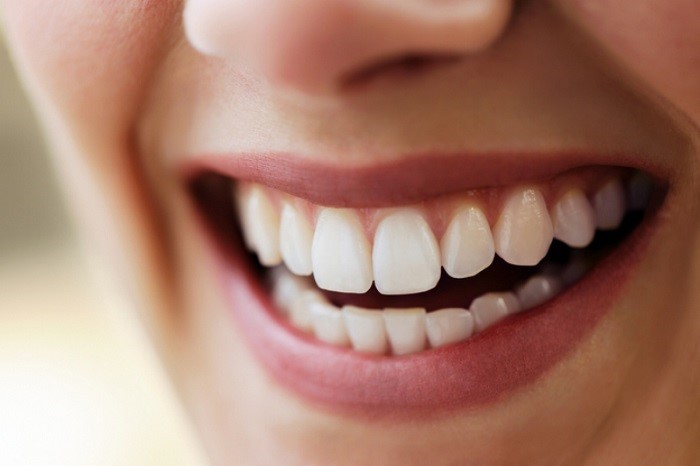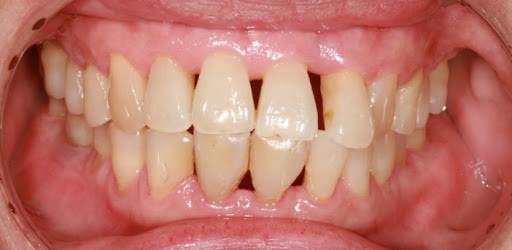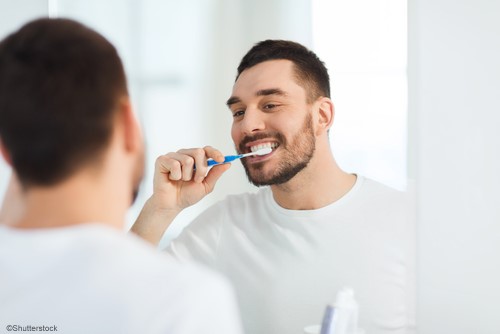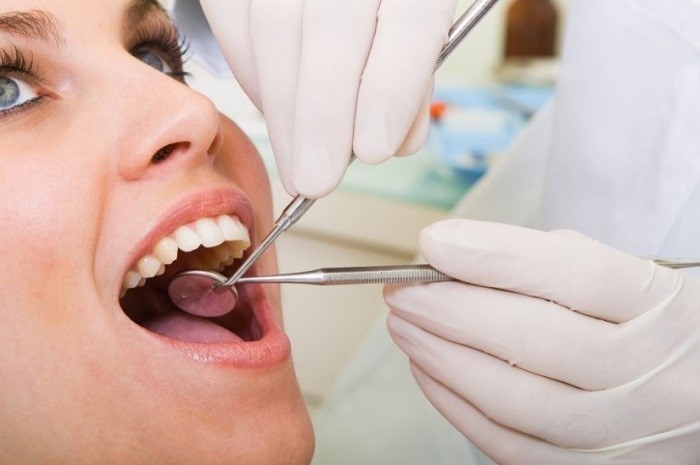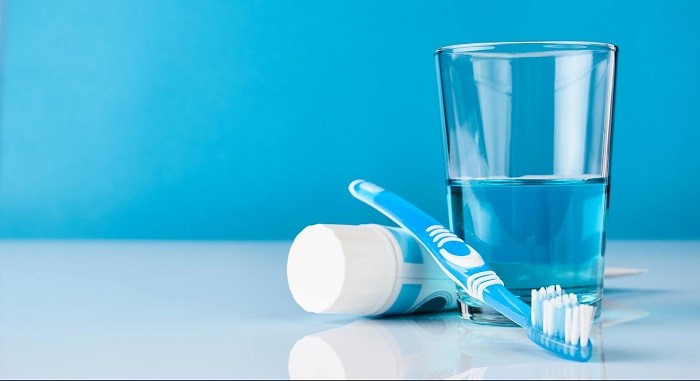Periodontal disease, also known as gum disease, is caused when bacteria in plaque (a sticky, colorless film that forms in the mouth) builds up between the gums and teeth. When the bacteria begin to grow, the gums surrounding the tooth can become inflamed.
If left untreated, this inflammation can cause the gums and supporting bone structure to deteriorate. This can lead to gum recession or even tooth loss. In addition, research has shown that gum disease may be associated with other diseases, such as diabetes and heart disease. Individuals can act in various ways to help prevent periodontitis, also known as periodontal disease. These include good oral hygiene, regular dental checkups and appropriate lifestyle changes.
What Is Periodontal Disease?
Periodontal disease refers to an infection of the tissue that surrounds and holds your teeth in place. There are two distinct stages to periodontal disease: The first stage, gingivitis, involves swelling and reddening of the gum tissue. The second, periodontitis, can mean the gums actually pulling away from teeth, bones deteriorating, and teeth loosening and potentially falling out.
What Causes It?
The simplest explanation for what causes periodontal disease is bacteria. The bacteria in the mouth, left unchecked, forms a film on the teeth called plaque that eventually hardens into tartar (calculus). This tartar spreads — sometimes below the gum line — and this infection causes inflammation and damage to teeth, gums, and bone.
What Are Its Risk Factors?
While bacteria is the main culprit behind periodontal disease, there are a number of behaviors or factors that can put a person at higher risk of it developing and progressing. Some of the leading risk factors are:
- Smoking
- Poor oral hygiene
- Diabetes
- Diseases that suppress the immune system
- Medications that reduce saliva production
- Hormonal changes in girls and women
- Stress
- Crooked teeth
- Genetic predisposition
What Are Its Warning Signs?
Some of the most common and obvious signs of periodontal disease include:
- Red/swollen gums
- Tender/bleeding gums
- Persistent bad breath or bad taste in the mouth
- Sensitive teeth
- Pain when chewing
- Changes to your bite
- Pulling away of gum tissue from teeth
- Loose teeth
PREVENTING PERIODONTAL DISEASE
Luckily, periodontal disease can be preventable.
Teeth Brushing
For the prevention of gingivitis and periodontitis, it is recommended for individuals to brush their teeth at least twice each day. If possible, brushing after every meal may help to decrease the risk of the disease even further.
It is important that the toothbrush used is replaced on a regular basis to prevent the growth of bacteria on the brush. At the very least, it should be changed for a fresh one every three to four months.
A soft toothbrush is usually preferable to a harder toothbrush for people at risk of the disease, as a harder brush can worsen initial symptoms and cause the gums to bleed. An electric toothbrush may be preferable to remove tough plaque and tartar from around the teeth.
Flossing
It is essential for flossing to be a part of the daily dental care regime for optimal prevention of periodontal disease. Many people rely on tooth brushing alone when, in reality, it is difficult for a toothbrush to reach fine places, such as the grooves in between the teeth.
Instead, it is recommended to floss the teeth once a day. The floss can pass through difficult to reach areas to remove plaque and bacteria, thus helping to protect the individual from periodontitis.
Other Cleaning Techniques
There are various other techniques to keep the teeth clean that may be needed in some circumstances, in addition to teeth brushing and flossing. These may include the use of:
- Dental pick, interdental brush or dental stick to clean between the teeth
- Professional cleaning at a dentist
Dental Check-Ups
It is helpful for patients to schedule regular dentist appointments so that a professional can monitor their dental health and recommendations can be made, if necessary. For most people, an appointment once a year is sufficient, although people with an increased risk of periodontitis may benefit from more frequent visits.
This is particularly important for people with misaligned or crowded teeth, or those who have braces or bridges. These things can make it more difficult than usual for individuals to clean their teeth by simple brushing and flossing, thus increasing their risk of periodontitis. Often, alternative ways to keep the teeth clean may be recommended for each individual.
Lifestyle Changes
Smoking and the use of tobacco are linked to an increased risk of developing periodontitis and more severe symptoms for those who are affected. People who smoke tend to have a greater build up of tartar on their teeth, which can lead to infection and periodontitis. Therefore, it is recommended that they quit smoking to help prevent periodontal disease.
Stress is another factor that can worsen periodontal disease and make it more difficult to treat. This is because it weakens the immune system of the body making it more difficult to fight off the bacteria in plaque. Therefore, eliminating or reducing stressful situations in daily life can help to prevent periodontitis.
Additionally, women with significant hormonal changes, such as those going through pregnancy or menopause, have an increased risk of the condition. Therefore, it is recommended that these women pay greater attention to the health of their teeth.
Use fluoride toothpaste
As for toothpaste, store shelves are lined with brands that claim to reduce gingivitis, freshen breath, and whiten teeth. How do you know which one is best for healthy gums? Make sure to choose toothpaste that contains fluoride . After that, the flavor and color is up to you!
Use a therapeutic mouthwash
Usually available over the counter, therapeutic mouthwashes can help reduce plaque, prevent or reduce gingivitis, reduce the speed that tarter develops, or a combination of these benefits,. A rinse helps remove food particles and debris from your mouth, though it’s not a substitute for flossing or brushing.
Diet
We all want to be able to live life to the fullest with the best health possible. Dental issues can get in the way by causing pain, discomfort, or embarrassment. Think of your mouth as the gateway to your body and don’t underestimate how it affects your entire self. With excellent nutrition, you can improve your oral and overall health. If you follow a healthy diet, practice good oral hygiene, and visit the dentist regularly, then you’ll be well on your way to living your best life. If you have any dental concerns, don’t delay, and address them with your dentist today.
Drink Plenty of Water
Another way to lower your sugar intake and improve your health is to think about what you drink. An easy way to quickly change your drinking habits is to reduce or replace sugar-sweetened soft drinks, coffees, juices, and teas. Natural sugar substitutes and no sugar added juices are better choices, but water is the best choice, especially if it’s fortified with fluoride.
Along with proper brushing and flossing habits, fluoridated water helps to maintain your oral health by making teeth more resistant to acid attacks that cause cavities. Drinking plenty of water also helps to flush the mouth, which reduces bacteria, acid, and food particles on your teeth and gums between the times you brush.
Reduce Sugar Intake
Sugar is one of the top causes of dental problems. Bacteria in your mouth feeds off sugar and causes dental decay and painful cavities. Canadians consume an average of 40 kg of sugar every year. For the health of your teeth and body, it’s important to reduce your sugar intake wherever you can. Read nutrition labels so you’re more aware of the sugar you consume, and watch out for different types of added sugars such as syrups, honey, and molasses.
When snacking, try to choose wholesome, sugar-free snacks. Sticky sweets are also some of the worst things for your teeth. Treats like gummy fruit snacks and chewy candies get stuck in the grooves of your teeth and can stay there for hours, eating away at your enamel. If you choose to eat sweets, then plan to do so with a regular meal. The increased flow of saliva at mealtimes helps to dilute and wash away sugars. Chewing fibrous vegetables and sugar-free gum also helps to clean the mouth until you can brush your teeth.
Vitamin C
A glass of orange juice in the morning could do a lot more than just give you a tasty wakeup call. A recent study found that people with gingivitis and periodontal disease tended to have lower levels of Vitamin C than patients with healthy gums. But when the people in the study took supplemental Vitamin C, their gum disease improved. So if you’re looking for a reason to have a second serving of fruit, go right ahead. Your gums will thank you!
Omega-3 Fats
Omega-3 fatty acids have long been shown to help decrease inflammation that contributes to heart disease. But data shows that it can also help prevent periodontal disease. Unfortunately, Omega-3s can only be gotten through foods (your body can’t make them itself). Fatty fishes like salmon and tuna, flaxseed oil, and walnuts are all great sources of Omega-3s.
Zinc
The last piece of the healthy gums diet is zinc. This mineral plays an important role in cell growth, repair, and healing. Not surprisingly, a study found that patients who used the healthy gums diet rich in zinc had better periodontal health than those who had zinc deficiencies. Proteins like red meat, poultry, and nuts are the most common sources of zinc, though oysters contain more zinc per serving than any food.
How Is It Treated?
Once the dentist or hygienist has diagnosed the periodontal disease, the first thing for patients to keep in mind is that the success of any treatment option is going to depend on their willingness to keep up good oral hygiene habits at home. That said, the early stage of periodontal disease — gingivitis — can be treated with regular cleanings from your hygienist in concert with daily brushing and flossing. More advanced periodontal disease might require more aggressive treatment options, such as deep-cleaning of the roots below the gum surface, antibiotics or other medications taken orally or placed below the gums, and even oral surgery.

